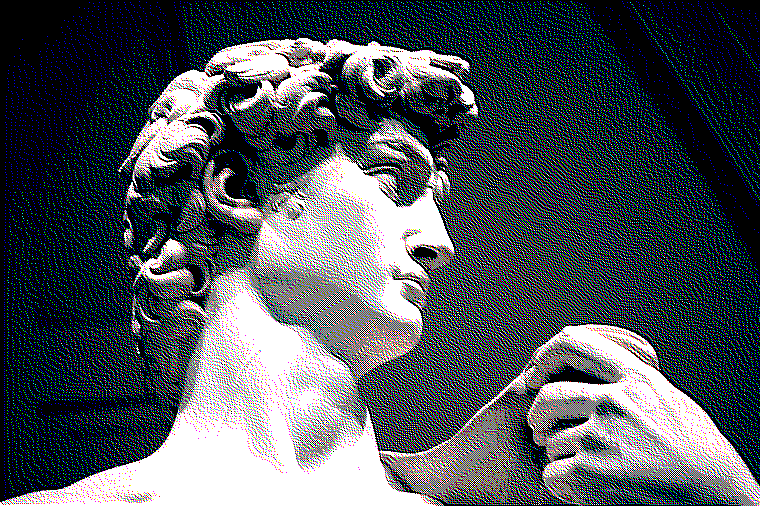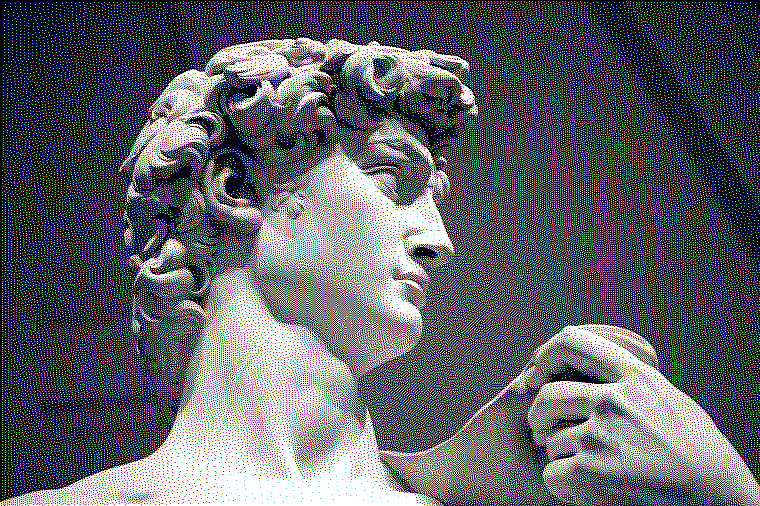Dithergo is a simple Go library implementing various dithering algorithm to produce halftone images. It supports color and monochrome image outputs.
The library implements the following dithering methods: Floyd Steinberg, Atkinson, Burkes, Stucki, Sierra-2, Sierra-3, Sierra-Lite. All of these algorithms have something in common: they diffuse the error in two dimensions, but they always push the error forward, never backward.
We can represent this with the following diagram:
X 7 5
3 5 7 5 3
1 3 5 3 1
(1/48)
where X represent the current pixel processed. The fraction at the bottom represents the divisor for the error. Above is the the Floyd-Steinberg dithering algorithm which can be transposed into the following Go code:
ditherers = []dither.Dither{
dither.Dither{
"FloydSteinberg",
dither.Settings{
[][]float32{
[]float32{ 0.0, 0.0, 0.0, 7.0 / 48.0, 5.0 / 48.0 },
[]float32{ 3.0 / 48.0, 5.0 / 48.0, 7.0 / 48.0, 5.0 / 48.0, 3.0 / 48.0 },
[]float32{ 1.0 / 48.0, 3.0 / 48.0, 5.0 / 48.0, 3.0 / 48.0, 1.0 / 48.0 },
},
float32(multiplier),
},
},
}You can plug in any dithering algorithm, so the library can be further extended.
$ go get -u -v github.com/esimov/dithergo
Type go run cmd/main.go --help to check all the supported commands. The library supports the following commands:
Usage of commands:
-e string
Generates & exports the color and greyscale mode halftone images.
Options: 'all', 'color', 'mono' (default "all")
-em float
Error multiplier (default 1.18)
-o string
Output folder
-t Option to export the tresholded image (default true)
You can run all of the supported dithering algorithms at once, or you can run a specific one from the cmd directory.
| Input |
|---|
 |
The below images are generated with the default options using Michelangelo's David statue as sample image.
| Color | Monochrome |
|---|---|
 |
 |
| Atkinson | Atkinson |
 |
 |
| Burkes | Burkes |
 |
 |
| Floyd-Steinberg | Floyd-Steinberg |
 |
 |
| Sierra-2 | Sierra-2 |
 |
 |
| Sierra-3 | Sierra-3 |
 |
 |
| Sierra-Lite | Sierra-Lite |
 |
 |
| Stucki | Stucki |
- Endre Simo (@simo_endre)
Copyright © 2018 Endre Simo
This software is distributed under the MIT license found in the LICENSE file.
